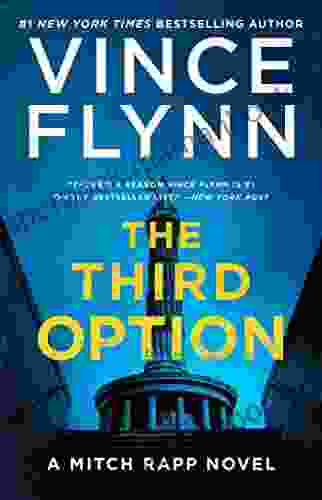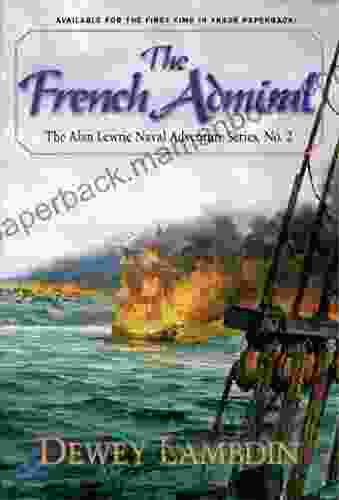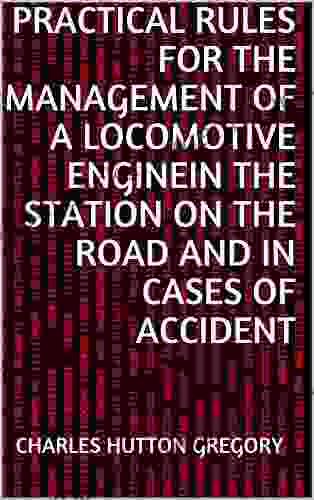Flood Damages Gentileschi: A Comprehensive Guide to the Impact and Restoration Efforts

In November 2019, the devastating floodwaters of the River Serchio in Tuscany, Italy, wreaked havoc upon the Palazzo Pretorio in Pontremoli. Among the priceless treasures housed within the palace were several works by the renowned Baroque artist Artemisia Gentileschi, including her iconic masterpiece, "Judith Beheading Holofernes." The floodwaters surged through the building, submerging the artworks and causing significant damage.
5 out of 5
| Language | : | English |
| File size | : | 270 KB |
| Text-to-Speech | : | Enabled |
| Screen Reader | : | Supported |
| Enhanced typesetting | : | Enabled |
| Print length | : | 73 pages |
This article aims to provide a comprehensive overview of the flood damages sustained by Gentileschi's works, exploring the impact on the paintings and the intricate restoration efforts undertaken to salvage them. We will delve into the techniques, challenges, and ethical considerations surrounding the preservation of these priceless artworks.
The Impact of Floodwaters on Gentileschi's Paintings
The floodwaters posed a grave threat to Gentileschi's paintings, which are revered for their vibrant colors, intricate details, and powerful compositions. The prolonged exposure to water caused a range of damages, including:
- Water stains and discoloration: The floodwaters left behind unsightly water stains and discoloration on the paintings' surfaces.
- Paint loss: The force of the water eroded and lifted paint layers, resulting in significant paint loss in some areas.
- Canvas buckling: The prolonged immersion in water caused the canvas supports to buckle, creating distortions and creases in the paintings.
- Mold growth: The damp conditions fostered the growth of mold and bacteria on the paintings' surfaces, potentially damaging the pigments and binders.
Restoration Efforts: A Journey of Preservation
Following the flood, a team of expert conservators from the Opificio delle Pietre Dure in Florence embarked on a meticulous restoration campaign to salvage Gentileschi's damaged paintings. The process was multifaceted and time-consuming, involving various techniques and considerations:
Cleaning and Stabilization
The first step involved gently cleaning the paintings to remove mud, debris, and surface contaminants. Conservators used specialized cleaning solutions and techniques to avoid further damage to the delicate paint layers.
Canvas Repair
The buckled canvases required careful repair to restore their original shape and tension. Conservators used specialized adhesives and techniques to flatten the canvases without compromising the integrity of the paint layers.
Paint Reconstruction
In areas where significant paint loss had occurred, conservators carefully reconstructed the missing portions using pigments and binders that matched the original composition. This process required a deep understanding of Gentileschi's technique and a keen eye for detail.
Retouching
Once the paint reconstruction was complete, conservators retouched the damaged areas to blend them seamlessly with the existing paint layers. This involved using subtle brushstrokes and carefully selected colors to restore the overall aesthetic integrity of the paintings.
Challenges and Ethical Considerations
Restoring flood-damaged paintings involves a delicate balance between preserving the original artwork and addressing the damage caused by the disaster. Conservators faced several challenges and ethical considerations throughout the process:
Distinguishing Original from Restored Areas
One of the primary challenges was distinguishing between the original paint layers and the restored areas. Conservators employed sophisticated techniques, such as microscopic analysis and infrared reflectography, to identify and document the original brushstrokes and materials.
Preserving the Artist's Intent
Another important consideration was preserving the artist's original intent. Conservators aimed to restore the paintings to their former glory while adhering to the principles of minimal intervention and reversibility. This meant avoiding excessive restoration and using techniques that could be reversed if necessary.
Balancing Aesthetics and Longevity
Restorers also had to balance the aesthetic considerations of restoring the paintings' original appearance with the need for long-term preservation. They employed materials and techniques that would protect the paintings from future damage while maintaining their visual integrity.
The flood damages sustained by Gentileschi's works in Pontremoli posed a significant challenge to art conservators. However, through meticulous restoration efforts and careful consideration of ethical principles, the team of experts удалось to salvage these priceless masterpieces and preserve their legacy for generations to come.
The restoration of flood-damaged artworks is a testament to the enduring power of human creativity and the dedication of those who work tirelessly to protect our cultural heritage. The story of Gentileschi's damaged paintings serves as a reminder of the importance of disaster preparedness and the resilience of art in the face of adversity.
5 out of 5
| Language | : | English |
| File size | : | 270 KB |
| Text-to-Speech | : | Enabled |
| Screen Reader | : | Supported |
| Enhanced typesetting | : | Enabled |
| Print length | : | 73 pages |
Do you want to contribute by writing guest posts on this blog?
Please contact us and send us a resume of previous articles that you have written.
 Top Book
Top Book Novel
Novel Fiction
Fiction Nonfiction
Nonfiction Literature
Literature Paperback
Paperback Hardcover
Hardcover E-book
E-book Audiobook
Audiobook Bestseller
Bestseller Classic
Classic Mystery
Mystery Thriller
Thriller Romance
Romance Fantasy
Fantasy Science Fiction
Science Fiction Biography
Biography Memoir
Memoir Autobiography
Autobiography Poetry
Poetry Drama
Drama Historical Fiction
Historical Fiction Self-help
Self-help Young Adult
Young Adult Childrens Books
Childrens Books Graphic Novel
Graphic Novel Anthology
Anthology Series
Series Encyclopedia
Encyclopedia Reference
Reference Guidebook
Guidebook Textbook
Textbook Workbook
Workbook Journal
Journal Diary
Diary Manuscript
Manuscript Folio
Folio Pulp Fiction
Pulp Fiction Short Stories
Short Stories Fairy Tales
Fairy Tales Fables
Fables Mythology
Mythology Philosophy
Philosophy Religion
Religion Spirituality
Spirituality Essays
Essays Critique
Critique Commentary
Commentary Glossary
Glossary Bibliography
Bibliography Index
Index Table of Contents
Table of Contents Preface
Preface Introduction
Introduction Foreword
Foreword Afterword
Afterword Appendices
Appendices Annotations
Annotations Footnotes
Footnotes Epilogue
Epilogue Prologue
Prologue Sara Rosett
Sara Rosett Sarah Stewart Holland
Sarah Stewart Holland Michael Margolis
Michael Margolis William Havelock
William Havelock Ken Mondschein
Ken Mondschein Kindle Edition
Kindle Edition James Weldon Johnson
James Weldon Johnson Kim Pearson
Kim Pearson Jake Adelstein
Jake Adelstein George Saintsbury
George Saintsbury Lisa Cobble
Lisa Cobble Georg F L Bausch
Georg F L Bausch Jeorald Pitts
Jeorald Pitts Heather Gudenkauf
Heather Gudenkauf Jo Beverley
Jo Beverley Chuck Stewart
Chuck Stewart Mary Poppendieck
Mary Poppendieck Sara Driscoll
Sara Driscoll Harriet Caves
Harriet Caves K Black
K Black
Light bulbAdvertise smarter! Our strategic ad space ensures maximum exposure. Reserve your spot today!

 Octavio PazAn Alan Lewrie Naval Adventure: An Odyssey of Courage, Betrayal, and Triumph...
Octavio PazAn Alan Lewrie Naval Adventure: An Odyssey of Courage, Betrayal, and Triumph...
 Gabriel BlairUnveiling the Controversial Revelations of The Game: A Critical Analysis of...
Gabriel BlairUnveiling the Controversial Revelations of The Game: A Critical Analysis of...
 Jermaine PowellThe Third Option: Mitch Rapp - A Journey into the World of Espionage and...
Jermaine PowellThe Third Option: Mitch Rapp - A Journey into the World of Espionage and... Albert CamusFollow ·18.8k
Albert CamusFollow ·18.8k Ignacio HayesFollow ·19.6k
Ignacio HayesFollow ·19.6k Jon ReedFollow ·12.2k
Jon ReedFollow ·12.2k Edgar HayesFollow ·13.7k
Edgar HayesFollow ·13.7k Charles ReedFollow ·9.4k
Charles ReedFollow ·9.4k Jaime MitchellFollow ·18.6k
Jaime MitchellFollow ·18.6k Ernesto SabatoFollow ·16.3k
Ernesto SabatoFollow ·16.3k Anthony BurgessFollow ·8.1k
Anthony BurgessFollow ·8.1k

 Jeremy Mitchell
Jeremy MitchellPlay We Now On Christmas Violin Christmas: A Heartfelt...
Play We Now On...

 Terry Bell
Terry BellTales from the Road: Confessions of an Atlanta Uber...
In the vibrant...

 Ervin Bell
Ervin BellThe French Admiral: A Gripping Naval Adventure with Alan...
In the vast expanse of...

 Henry David Thoreau
Henry David ThoreauCrochet Cozy Afghan Patterns: Crochet Weekend Afghan...
to Crochet...

 Orson Scott Card
Orson Scott CardAn Archaeological View Of The Industrialization Of North...
The industrialization of North America was a...

 Josh Carter
Josh CarterClipboard Christmas Skits by Tom Spence: A Festive...
A Christmas...
5 out of 5
| Language | : | English |
| File size | : | 270 KB |
| Text-to-Speech | : | Enabled |
| Screen Reader | : | Supported |
| Enhanced typesetting | : | Enabled |
| Print length | : | 73 pages |






